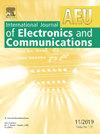An ANN-based distributed secondary controller used to ensure accurate current sharing in DC microgrid
IF 3.2
3区 计算机科学
Q2 ENGINEERING, ELECTRICAL & ELECTRONIC
Aeu-International Journal of Electronics and Communications
Pub Date : 2025-08-18
DOI:10.1016/j.aeue.2025.156002
引用次数: 0
Abstract
In a DC Microgrid, to minimise the effect of unequal cable resistances, distributed secondary controllers are included in addition to droop controllers. An accurate Current Sharing based Secondary Controller (ACSSC) is proposed in this paper, which is used to ensure proportional or accurate sharing of power demanded by loads among sources in a DC microgrid. However, ACSSC is a model approach and imposes a computational burden on digital signal processors (DSPs) in the case of a DC microgrid having a large number of sources and loads. To address this issue, a distributed Artificial Neural Network-based ACSSC (ANN-ACSSC) is proposed, which includes a learning framework of the accurate current estimator, droop gain estimator and voltage estimator to ensure accurate current sharing in the DC microgrid and maintain the voltage regulation across the converter within the specified limit. The performance of ANN-based estimators is compared to the state-of-the-art machine learning-based secondary controllers like bagged ensemble, Reinforcement-learning-based Integrated Control (RLIC) and Reinforcement Learning-based Approximate Dynamic Programming (RLADP-based estimators using performance metrics like MAE, MSE and R2 score. The inference time of various estimators included in ACSSC is evaluated using the ‘tic-toc’ functionality included in Matlab. The Levenberg-Marquardt algorithm is used for training the various estimators included in ANN-ACSSC. The performance of the proposed ANN-ACSSC is compared with that of the proposed ACSSC. Further, the performances of ANN-ACSSC and ACSSC for a nonzero value of communication delay are studied. The viability of the ANN-ACSSC is validated using the experimental results captured using a lab prototype of a DC microgrid.
一种基于人工神经网络的分布式二次控制器,用于保证直流微电网电流的精确共享
在直流微电网中,为了尽量减少不均匀电缆电阻的影响,除了下垂控制器外,还包括分布式二次控制器。本文提出了一种基于精确电流共享的二次控制器(ACSSC),用于保证直流微电网中负载所需功率的比例或精确共享。然而,ACSSC是一种模型方法,并且在具有大量源和负载的直流微电网的情况下,对数字信号处理器(dsp)施加了计算负担。为了解决这一问题,提出了一种基于分布式人工神经网络的ACSSC (ANN-ACSSC)方法,该方法包括精确电流估计器、下降增益估计器和电压估计器的学习框架,以确保直流微电网中精确的电流共享,并保持变流器的电压调节在规定的范围内。将基于人工神经网络的估计器的性能与最先进的基于机器学习的二级控制器(如袋装集成、基于强化学习的集成控制(RLIC)和基于强化学习的近似动态规划(rladp)的估计器进行比较,这些估计器使用MAE、MSE和R2分数等性能指标。使用Matlab中包含的“tic-toc”函数来评估ACSSC中包含的各种估计器的推理时间。Levenberg-Marquardt算法用于训练ANN-ACSSC中包含的各种估计器。将所提出的ANN-ACSSC的性能与所提出的ACSSC进行了比较。进一步研究了ANN-ACSSC和ACSSC在非零通信时延下的性能。使用直流微电网的实验室原型捕获的实验结果验证了ANN-ACSSC的可行性。
本文章由计算机程序翻译,如有差异,请以英文原文为准。
求助全文
约1分钟内获得全文
求助全文
来源期刊
CiteScore
6.90
自引率
18.80%
发文量
292
审稿时长
4.9 months
期刊介绍:
AEÜ is an international scientific journal which publishes both original works and invited tutorials. The journal''s scope covers all aspects of theory and design of circuits, systems and devices for electronics, signal processing, and communication, including:
signal and system theory, digital signal processing
network theory and circuit design
information theory, communication theory and techniques, modulation, source and channel coding
switching theory and techniques, communication protocols
optical communications
microwave theory and techniques, radar, sonar
antennas, wave propagation
AEÜ publishes full papers and letters with very short turn around time but a high standard review process. Review cycles are typically finished within twelve weeks by application of modern electronic communication facilities.

 求助内容:
求助内容: 应助结果提醒方式:
应助结果提醒方式:


